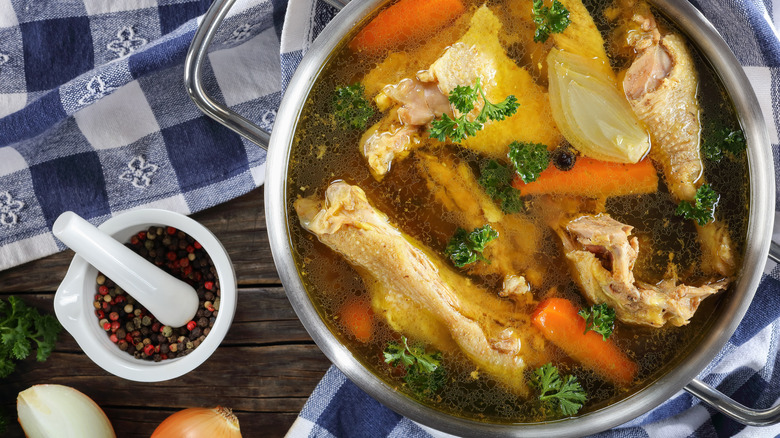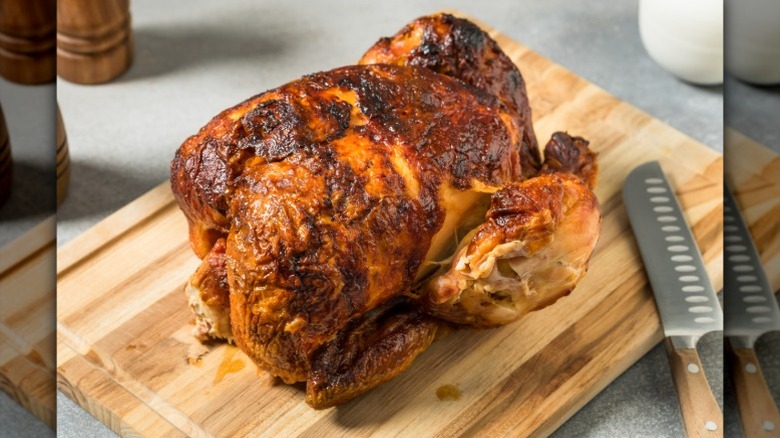What's The Best Part Of Chicken To Use For Stock?
A good, homemade chicken stock is the foundation of countless comforting dishes — from soups and risottos to curries and gravies. While it's tempting to toss whatever chicken scraps you have into the pot and call it a day, the best homemade stock comes from using the specific parts of the bird which contribute the right balance of flavor, body, and richness. We recently caught up with Chef Rick Bayless, one of the featured talents at Utility this month, a new restaurant trade show in Chicago geared toward indie restaurants, chefs, and small vendors.
Best known for his expertise in traditional Mexican cuisine at acclaimed Chicago restaurants, Bayless is no stranger to crafting deep, rich broths for his tortilla soups. "Back and necks are common, because they are cheap, but adding a couple of meaty thighs or legs will make it richer," Bayless told The Takeout. Chicken legs and thighs are excellent for making chicken stock because they strike a great balance between meat, bone, skin, and connective tissue; all key components for a rich, flavorful broth. The bones and joints provide collagen, which breaks down during simmering to give the stock body and a silky texture. Thighs and drumsticks also tend to be more accessible than specialty parts like the back or feet, making them a practical choice for home cooks looking to avoid low quality, store-bought chicken stock.
Chicken carcasses are a good all-purpose option
A leftover chicken carcass from a roasted bird is one of the most common and convenient ingredients for homemade stock. Roasting adds depth and a touch of sweetness to the flavor, especially if the skin was well-seasoned. Bayless agrees, noting, "Most butchers won't sell carcasses, but if you are butchering your own chicken, I suggest freezing the carcass to turn into stock. In fact, I recommend turning it into stock immediately, then freezing that."
Carcasses offer a good balance of bones, connective tissue, and bits of cooked meat; making them ideal for a homemade stock. Just note that if your chicken had a lot of seasoning, it can influence the flavor of your final stock, which may or may not be what you want.
Chef Bayless likes to keep his stock simple. "In Mexico, which inspires my cooking, stocks are made rather simply with onion and garlic (which adds richness) and thyme, marjoram, and bay (which add an herbal character)," he says. "In Europe, they like to add carrot for sweetness and celery for a bit of vegetable bitterness."
For the best chicken stock, reach for the parts that are rich in bones, cartilage, and connective tissue. Stock-making is also a great way to reduce waste and get more value out of every chicken. So, the next time you're breaking down a bird or staring at the remains of the best grocery store rotisserie chicken, remember: Your next great stock starts here.

